We had another lovely day seeking out interesting churches in the city of London.
Starting from Bishopsgate, we took in two historic churches, although they couldn’t be more different inside.
St Botolph’s
St Botolph’s without Bishopsgate, to give it its full title, is a church blessed with links to various livery companies – there’s a fascinating explanation of how livery companies came about on the St Botolph’s website (do you know where the phrase ‘sent to Coventry’ originates, for example?) It’s a beautiful 18th century building, and despite being badly damaged in a 1993 IRA bombing you would hardly know it.

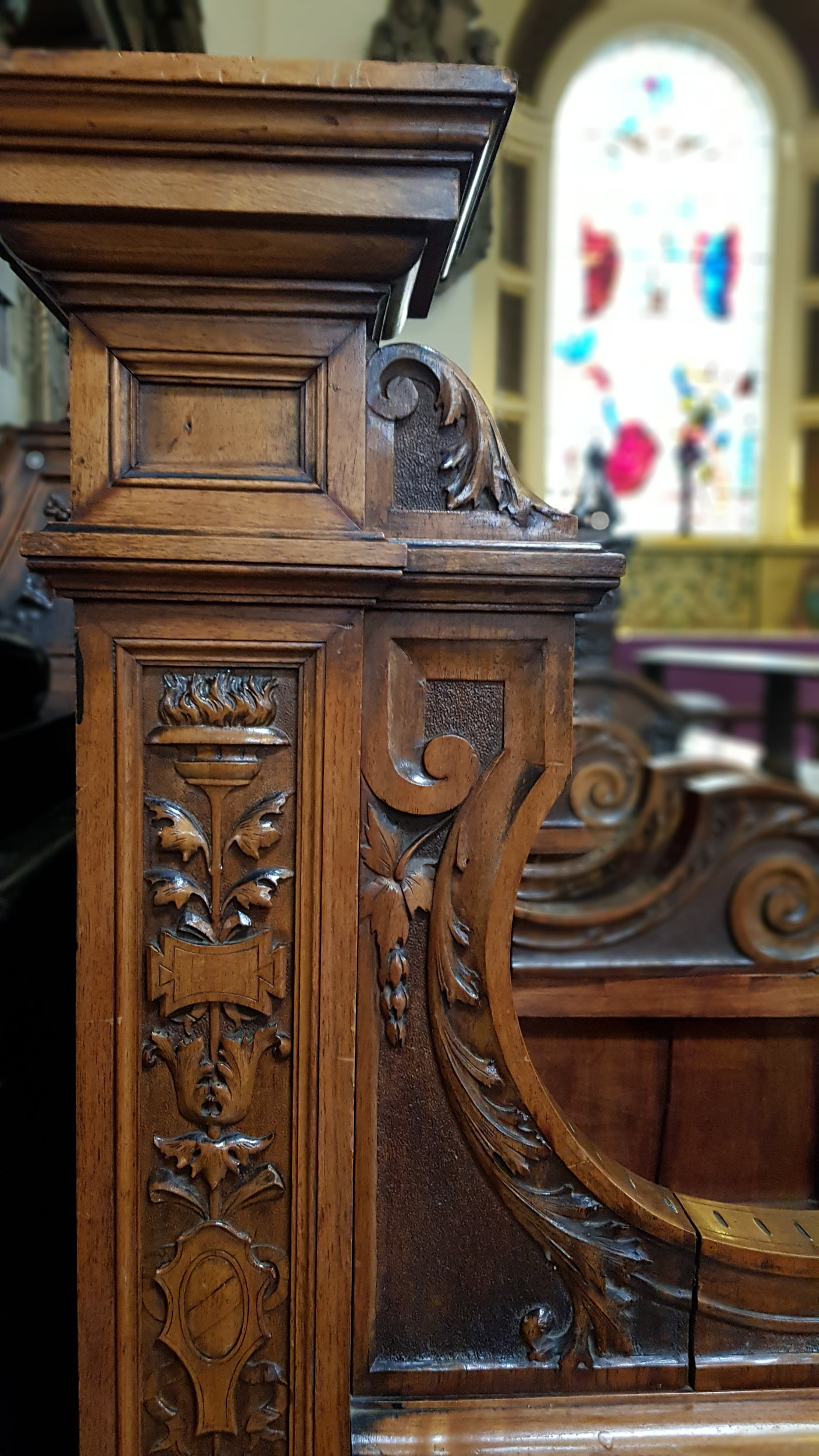
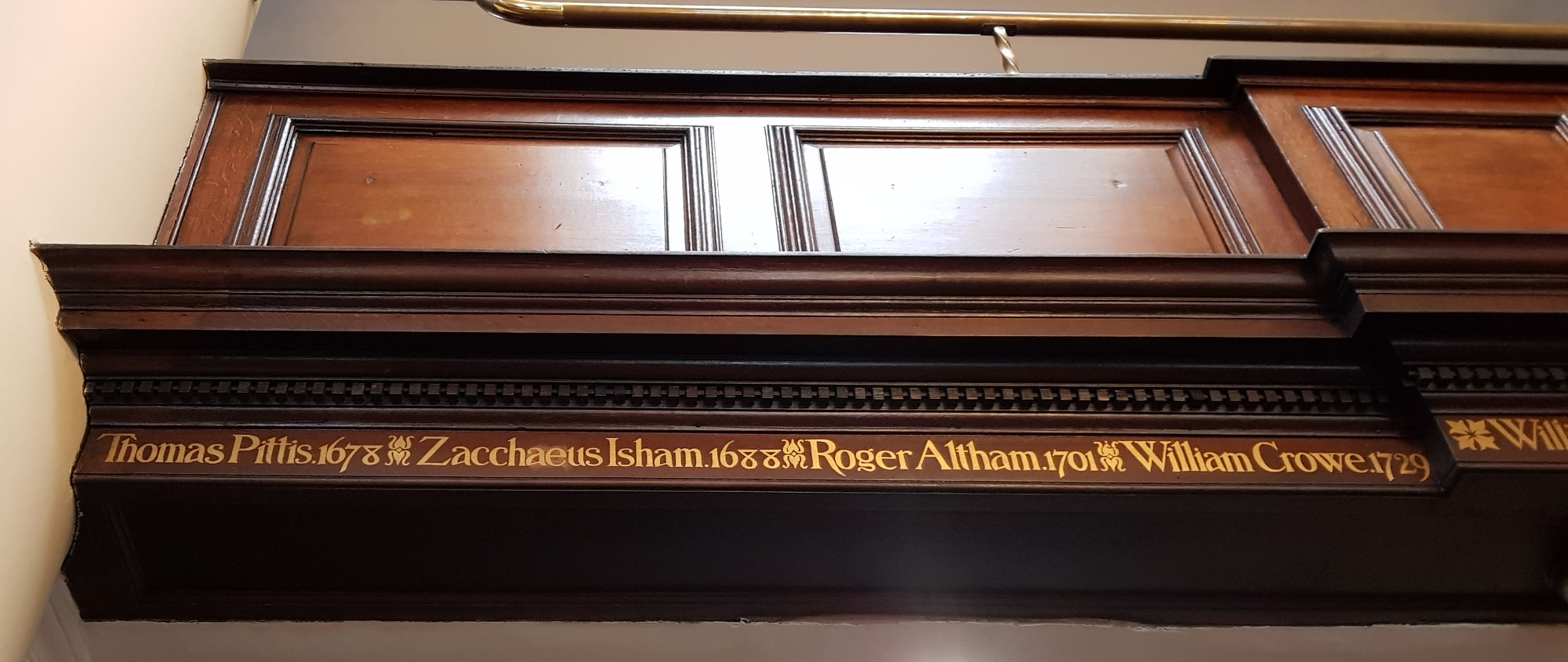
St Helen’s Bishopsgate
Just down the road is St Helen’s Bishopsgate, which has the honour of being the largest surviving parish church in the City of London. Set back from the main road, the exterior is promisingly old. But inside, various remodellings have taken place since Victorian times. More recently it has been pretty much gutted (after the aforementioned IRA bombing, despite the church having survived both the Fire of London and the Blitz). Now the interior is one of those ‘bright, large, flexible open-spaces’. As Wikipedia helpfully tells us, “the principles of this restoration sought to arrange the building once again around the preaching of the Word and strip it down of the ritualistic elements added in Victorian times, following the needs of the large Evangelical congregation.” Ritualistic elements? I certainly noticed there was not one single crucifix in the entire place. I’m not a church-goer myself but I’m saddened when I see this happening, and slightly spooked. It reminded me of the Church of Scientology we once stumbled into on Queen Victoria Street. It looked and felt like a place of worship and yet … and yet… Luckily St Helen’s still retains its memorials on the walls, and a disused font.

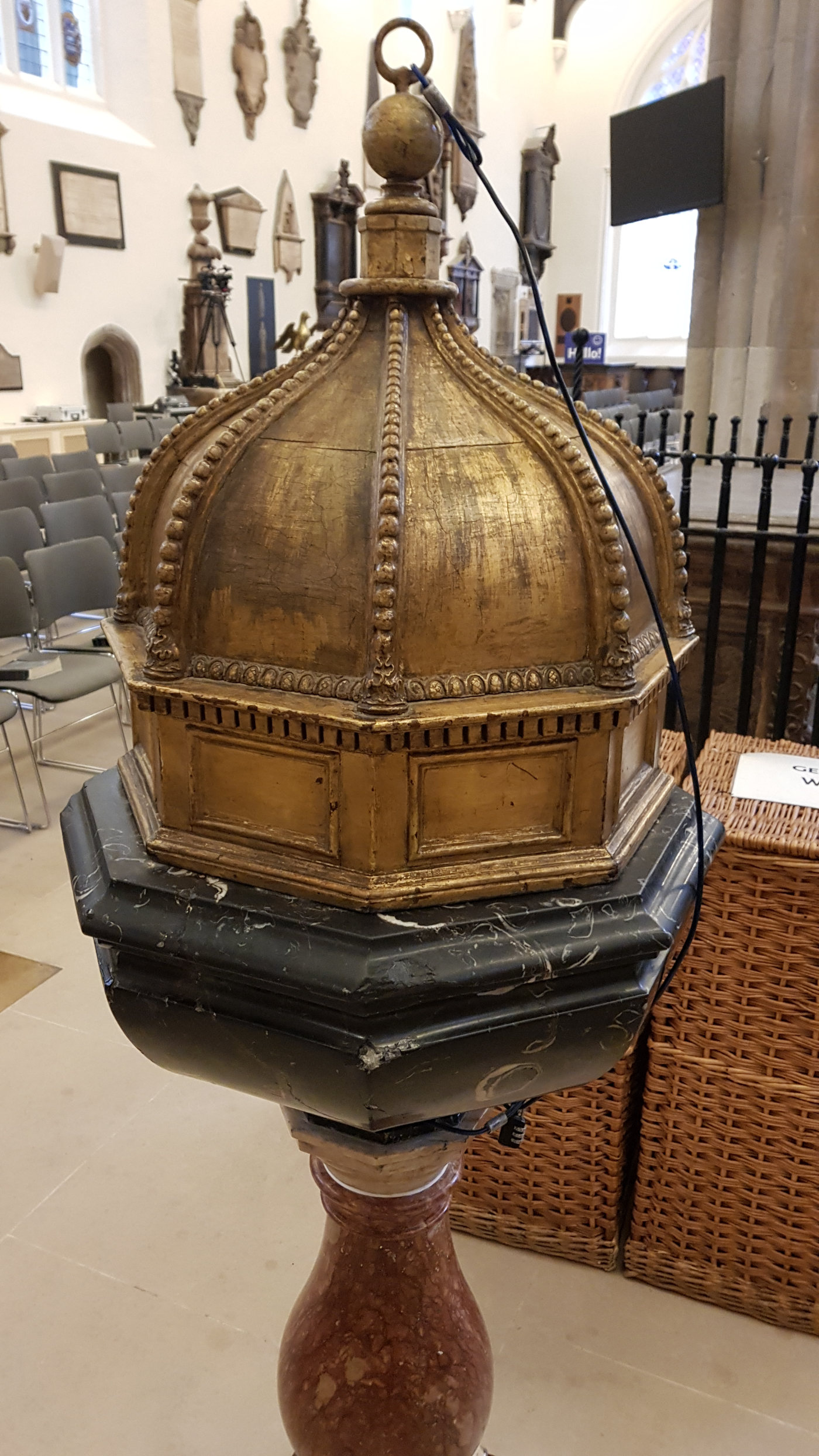
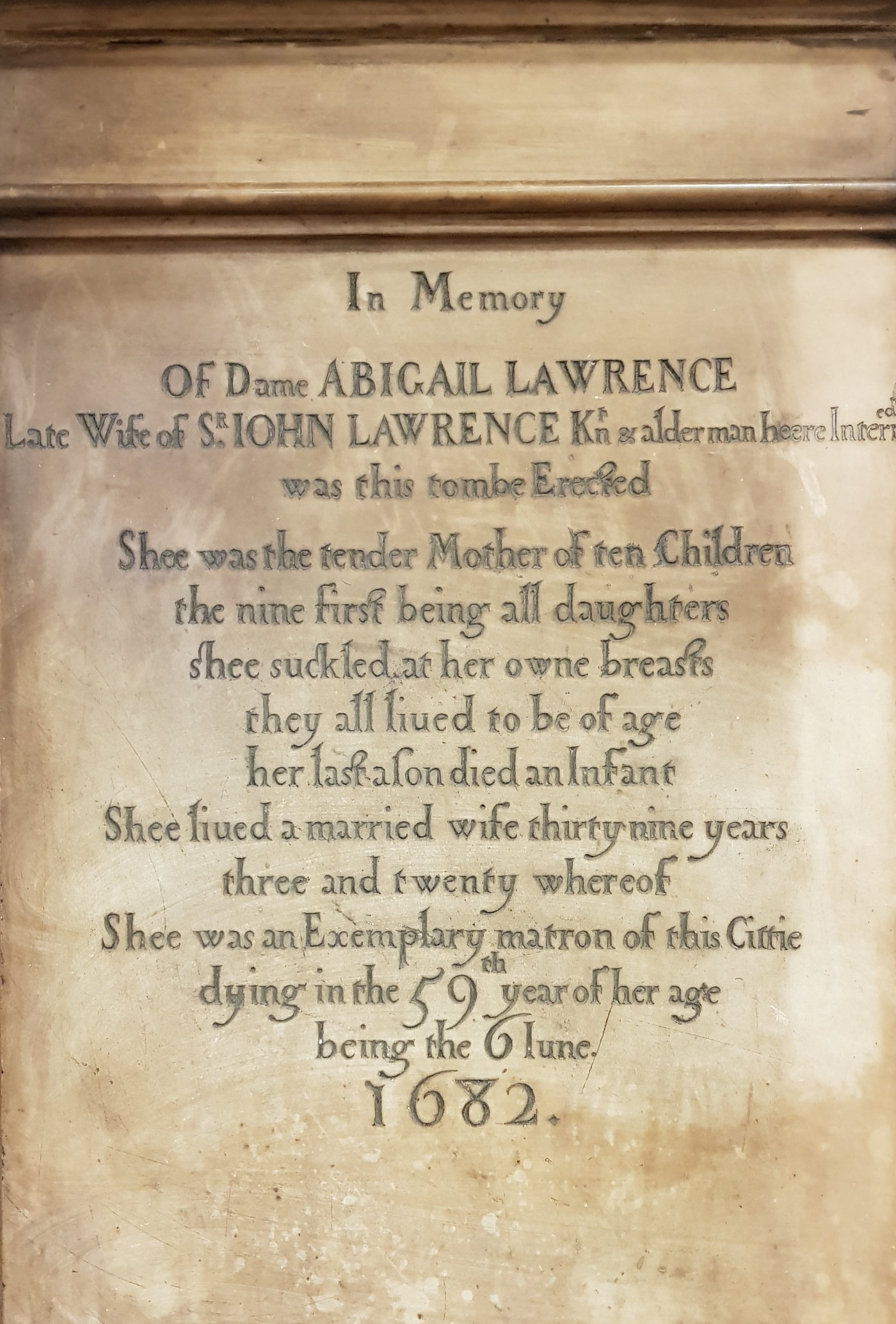
Next, an interlude: up to the top of the Fenchurch Building (aka the ‘Walkie Talkie’) to see the Sky Garden, which bills itself as ‘London’s highest public garden’. Rather having with people, but some good views.

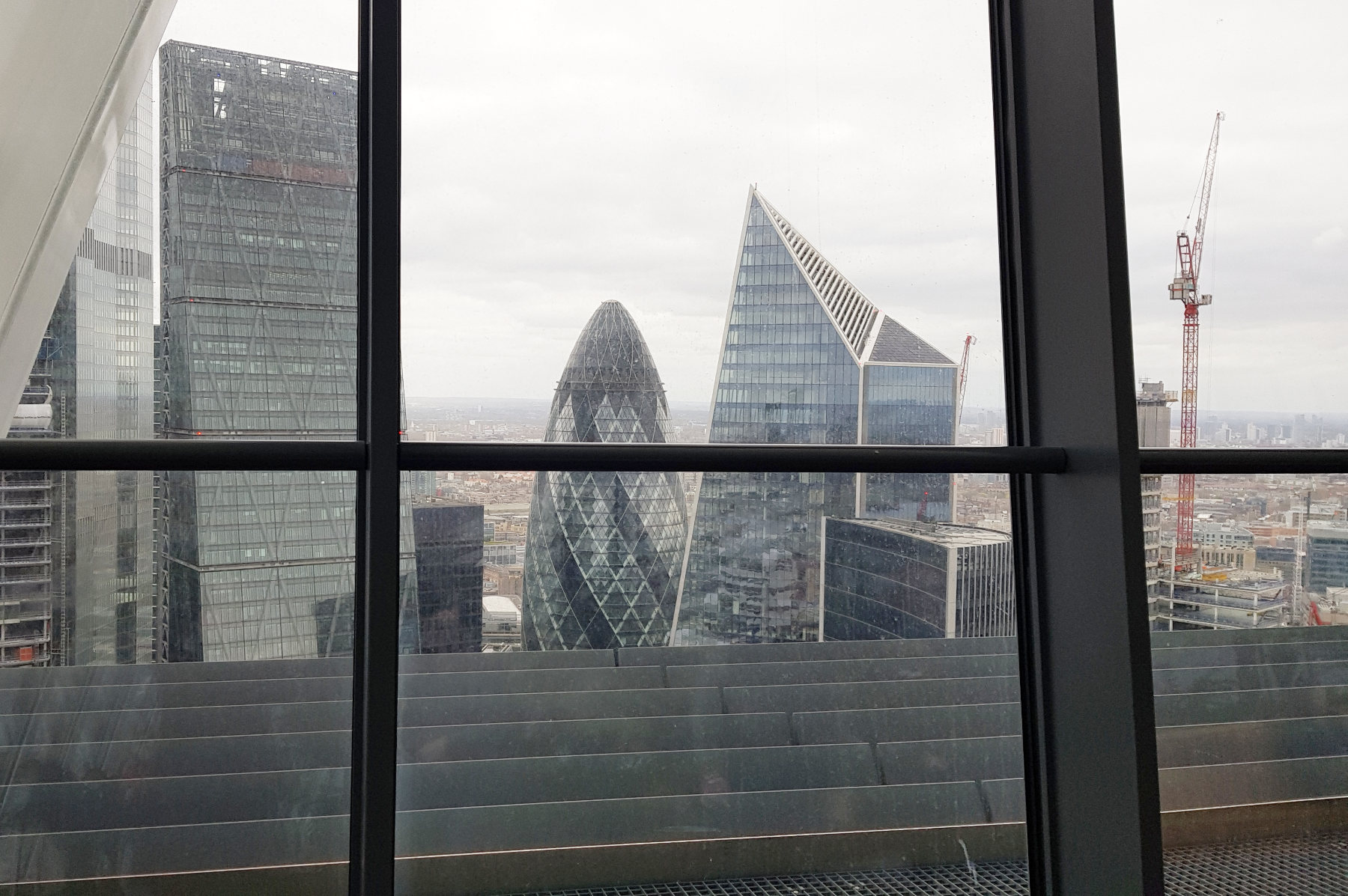
A nice direct view of the Gherkin (30 St Mary Axe), still one of my favourite towers on the London skyline. Here’s an interesting comparison – a photo I took ten years ago from the Gherkin looking towards this very direction… but when it stood alone and none of these other buildings existed!

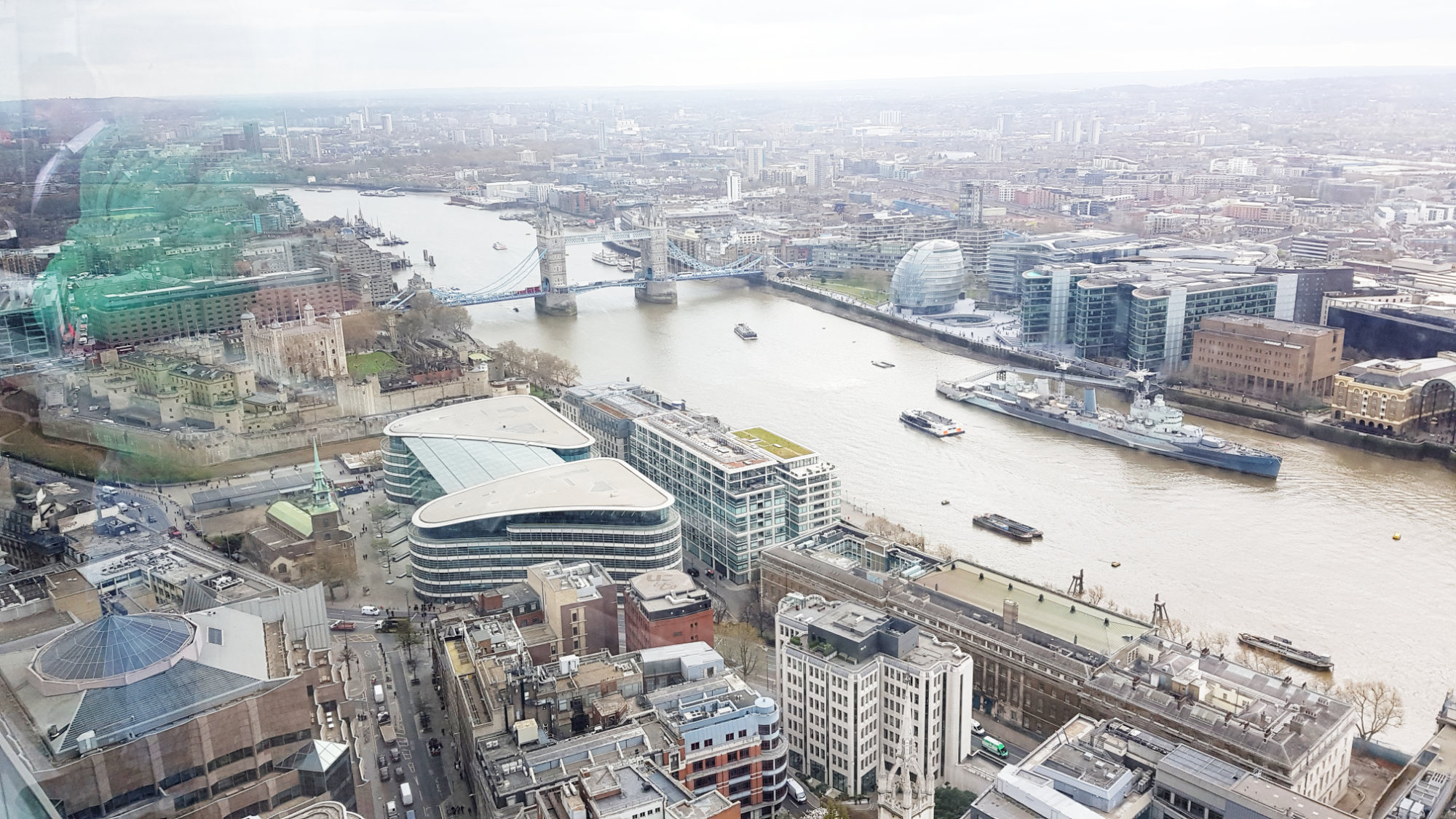
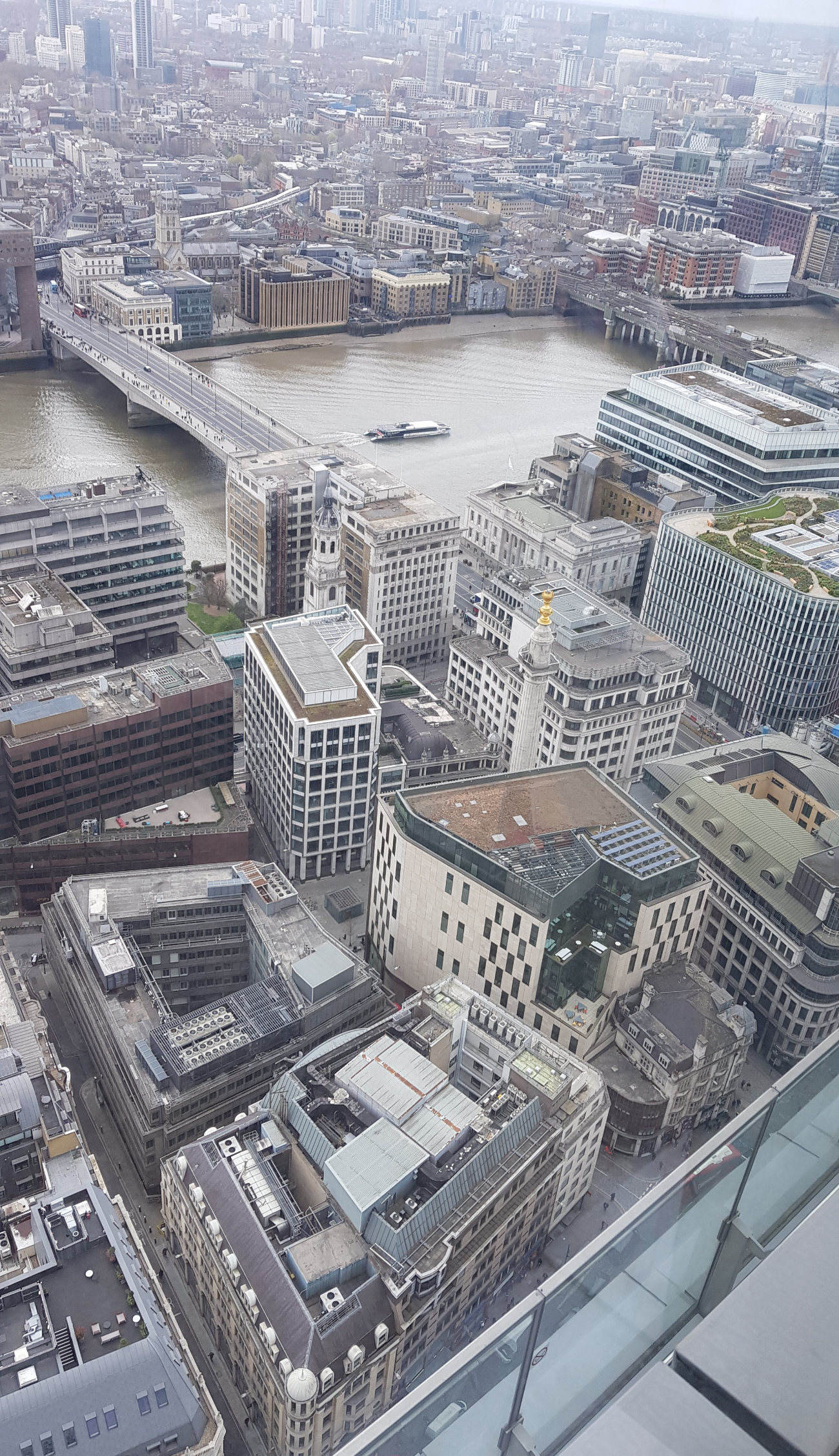
Temple Church
One of the most interesting city churches is the Temple Church right in the heart of London’s legal quarter south of Fleet Street. It was built by the Knights Templar in the 12th century – seriously! I can’t summarise its amazing history but it’s all here if you’re interested.


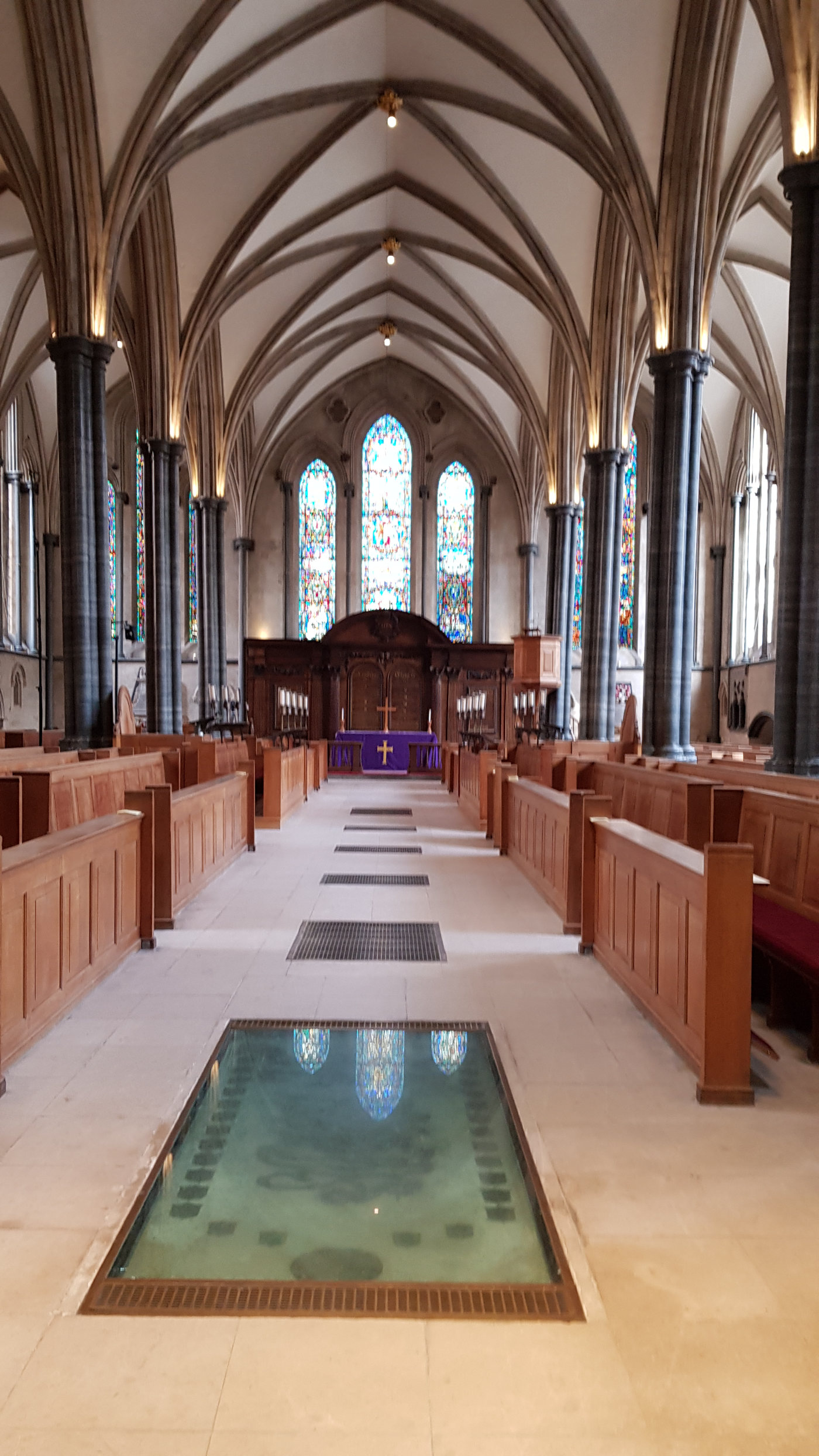
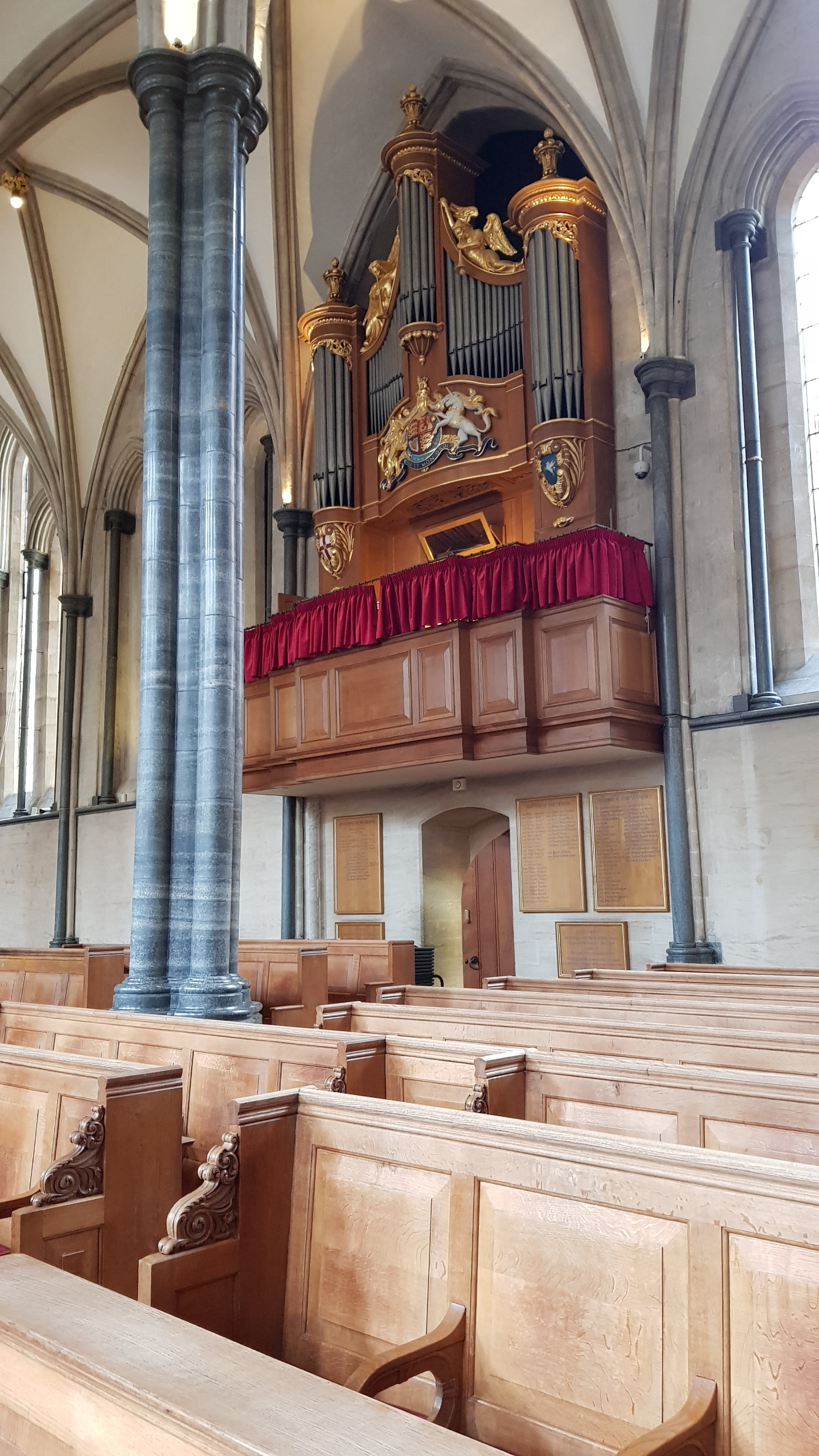
Of course, not all London’s city churches are endowed or glamorous. Many are tucked away, some are closed pending restoration, some are a bit crumbly, some have been converted to ‘multipurpose spaces’ while others are kept going by small dedicated teams.
St Peter’s Cornhill
We stopped by to see St Peter’s Baroque and somewhat gloomy interior. It’s possible the organ never gets played now, but there’s still some nice stained glass. The church is in the parish of St Helen’s Bishopsgate, which may explain the furniture and piles of equipment about the place. We visited St Peter’s before and I blogged about it here.

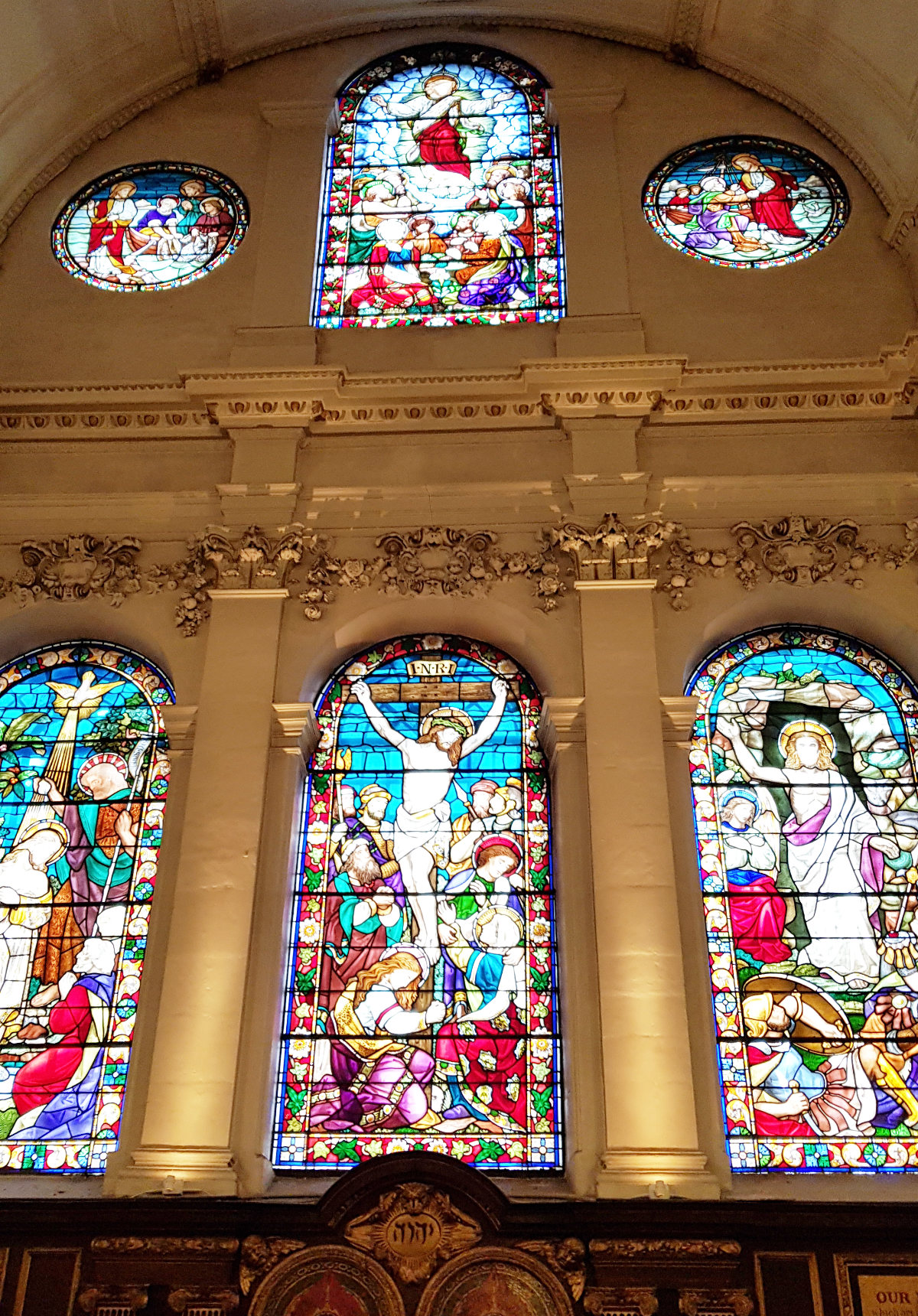

St Bartholomew-the-Less
On to St Bartholomew-the-Less. We did try to find this before, when we visited the fantastic St Bartholomew-the-Great, but clearly we didn’t look hard enough, as it’s pretty much next door. I didn’t make any notes about this church, but pleasant enough!
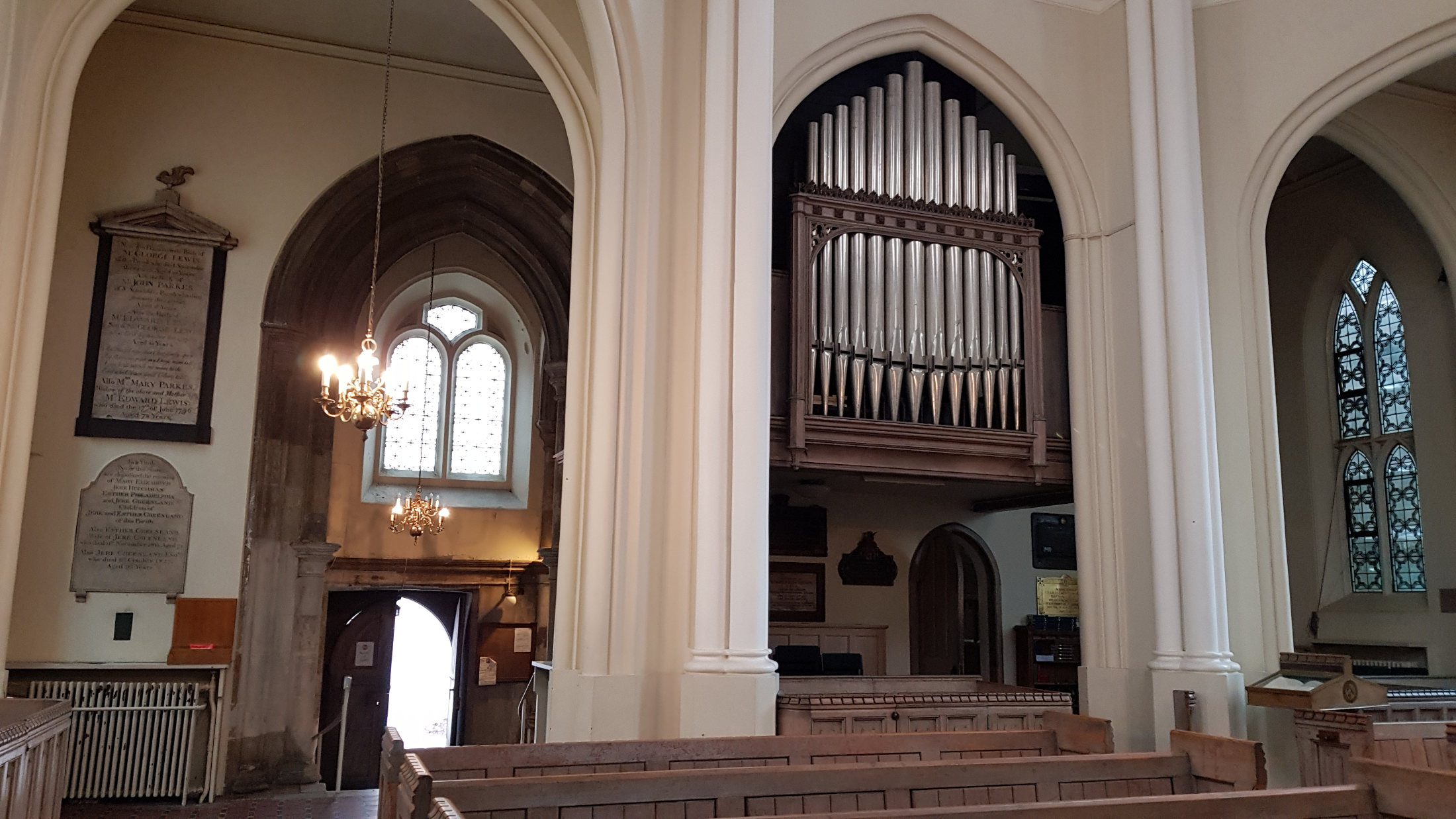

Holy Sepulchre
Up towards Holborn Viaduct is what’s known as the Musician’s Church, or Holy Sepulchre. Its vast interior has a good acoustic, and there’s a dedicated Musician’s Chapel which features the grave of Sir Henry Wood, founder of the Proms.

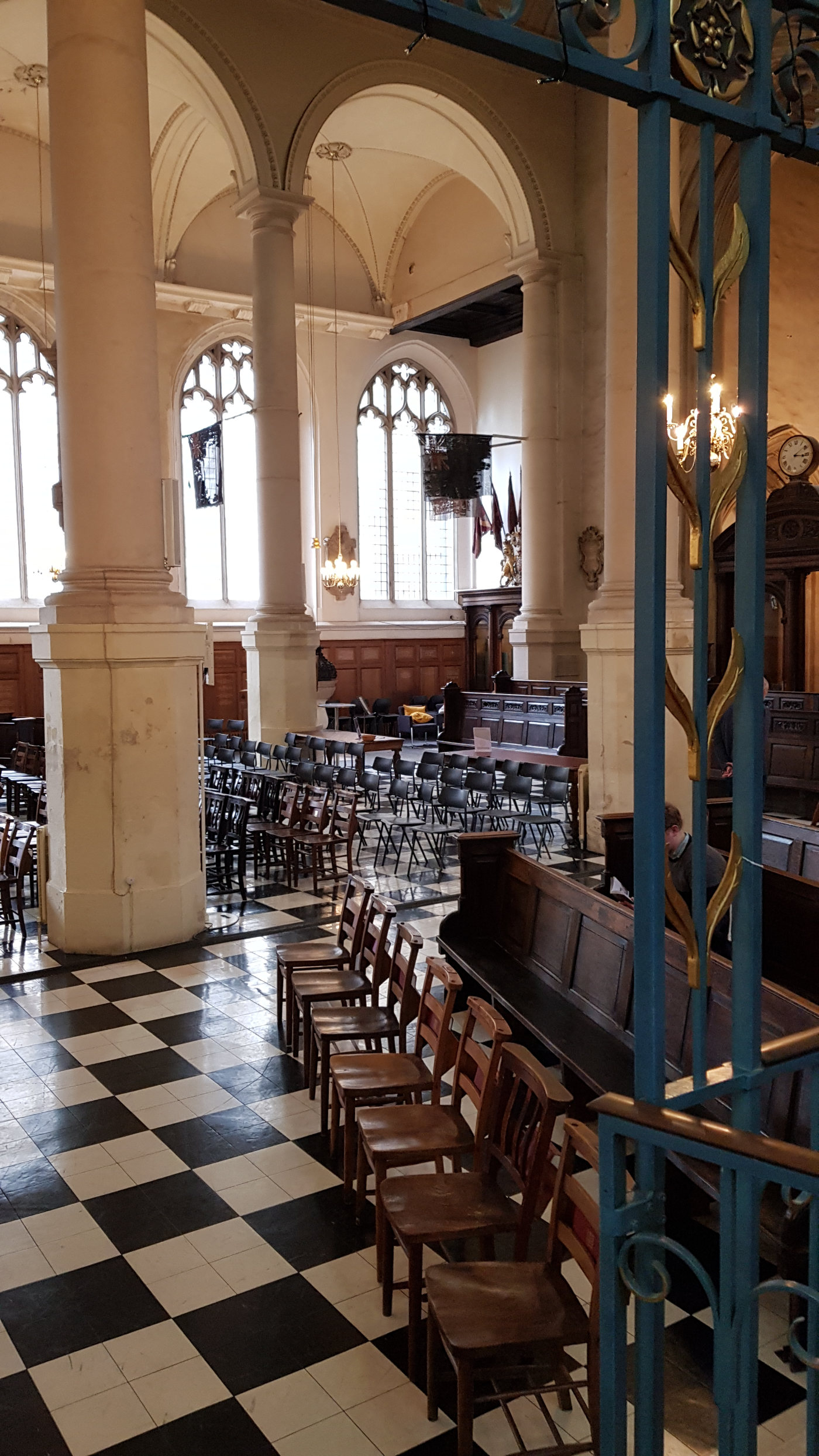
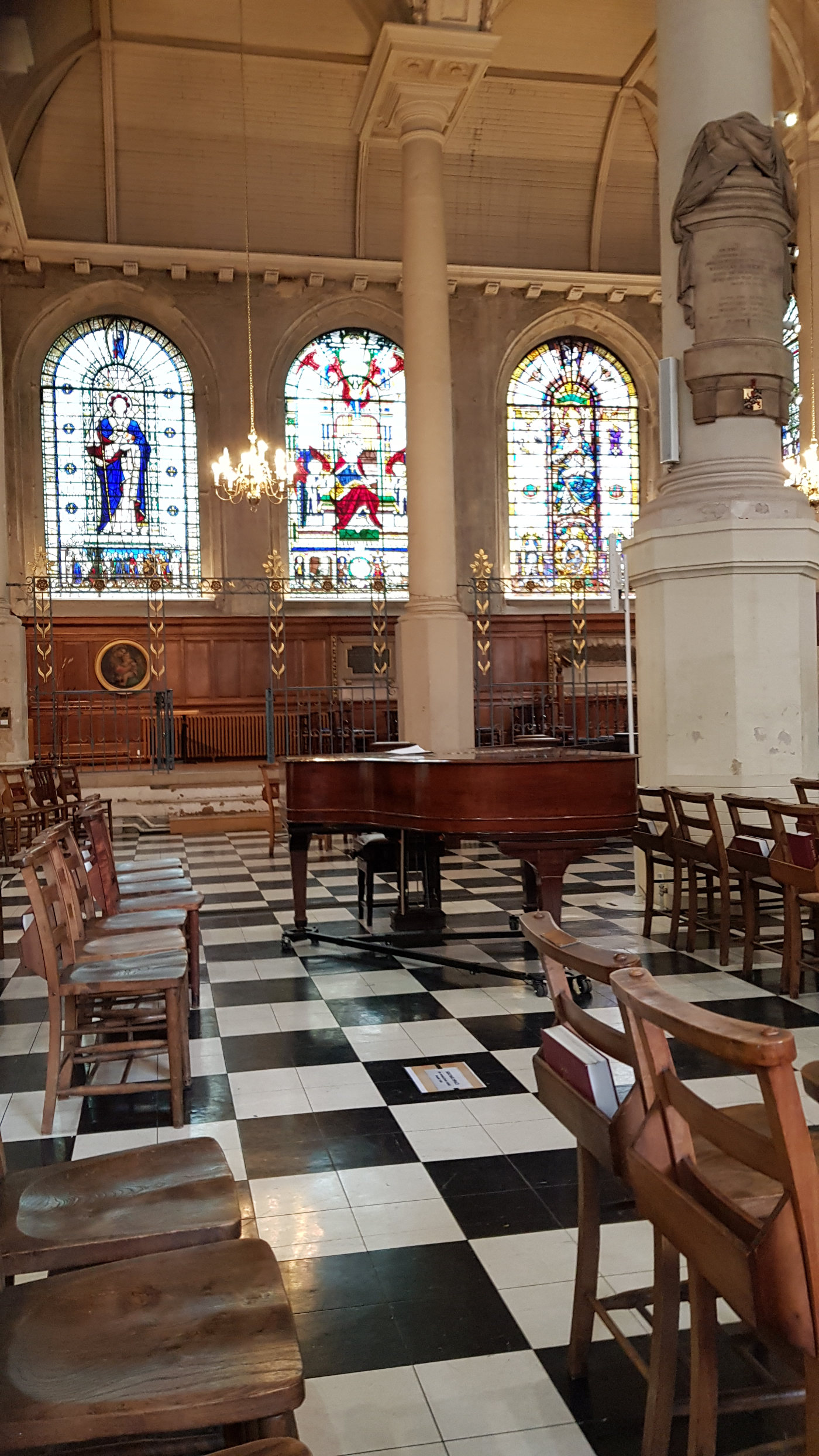
Nick and I have performed here together; I was in the choir and he was playing organ continuo. I think it was a Mozart Requiem. I remember leaving at the end to fetch the car and drive it onto the pavement outside so we could load the organ for the journey home. We were back long before the choir, whose coach driver got lost trying to get out of the city and I think they travelled via Watford or somewhere. Slight digression there, sorry!
St Andrew’s Holborn
Up the road from Holy Sepulchre on a busy junction is the oasis of calm that is St Andrew’s. Another church claiming its history back nearly a thousand years, although the present day church is 17th century, one of Wren’s many wonderful designs. There’s a very touching memorial to Sir Thomas Coram who created the Foundling Hospital in the 18th century.
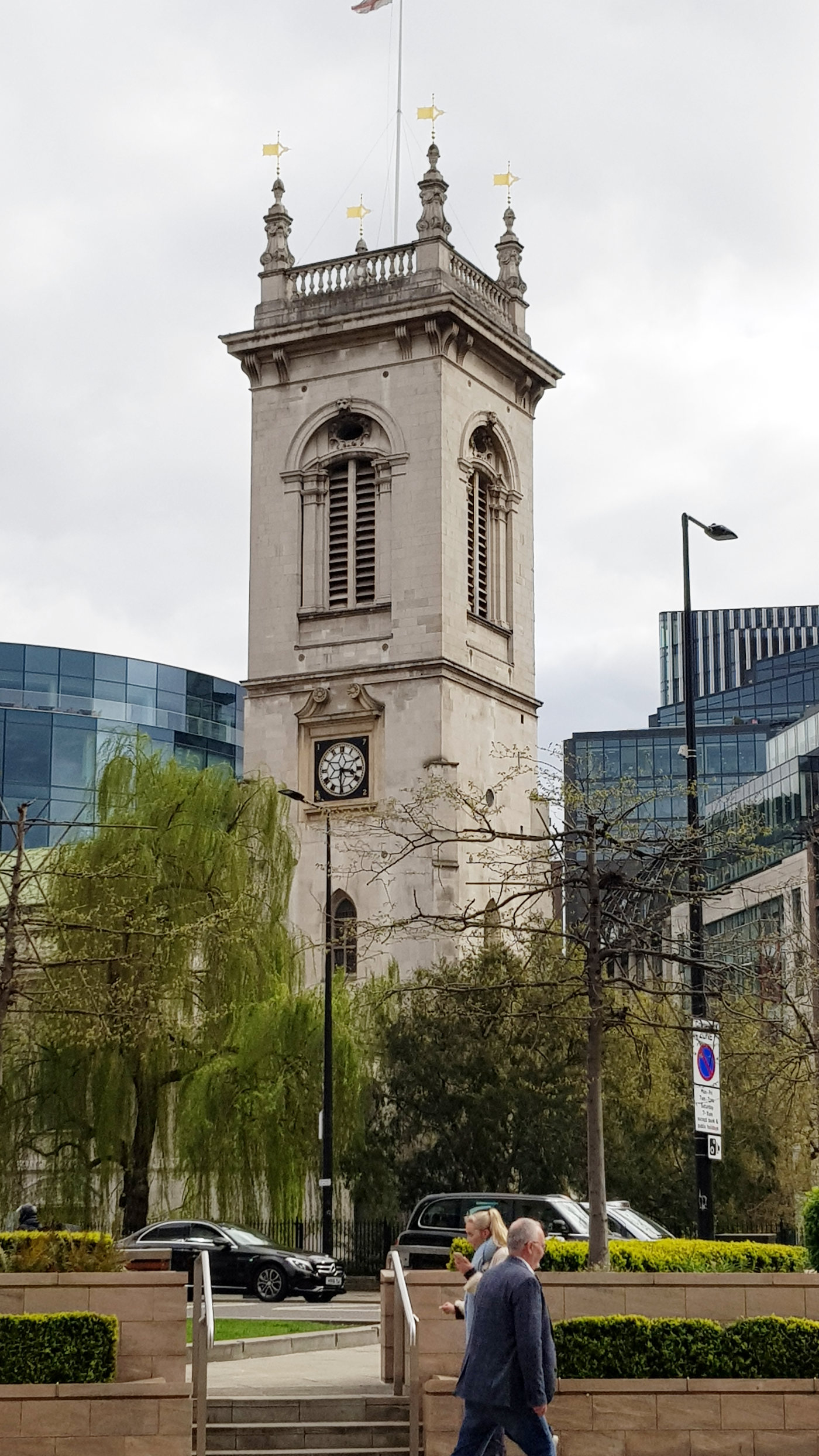

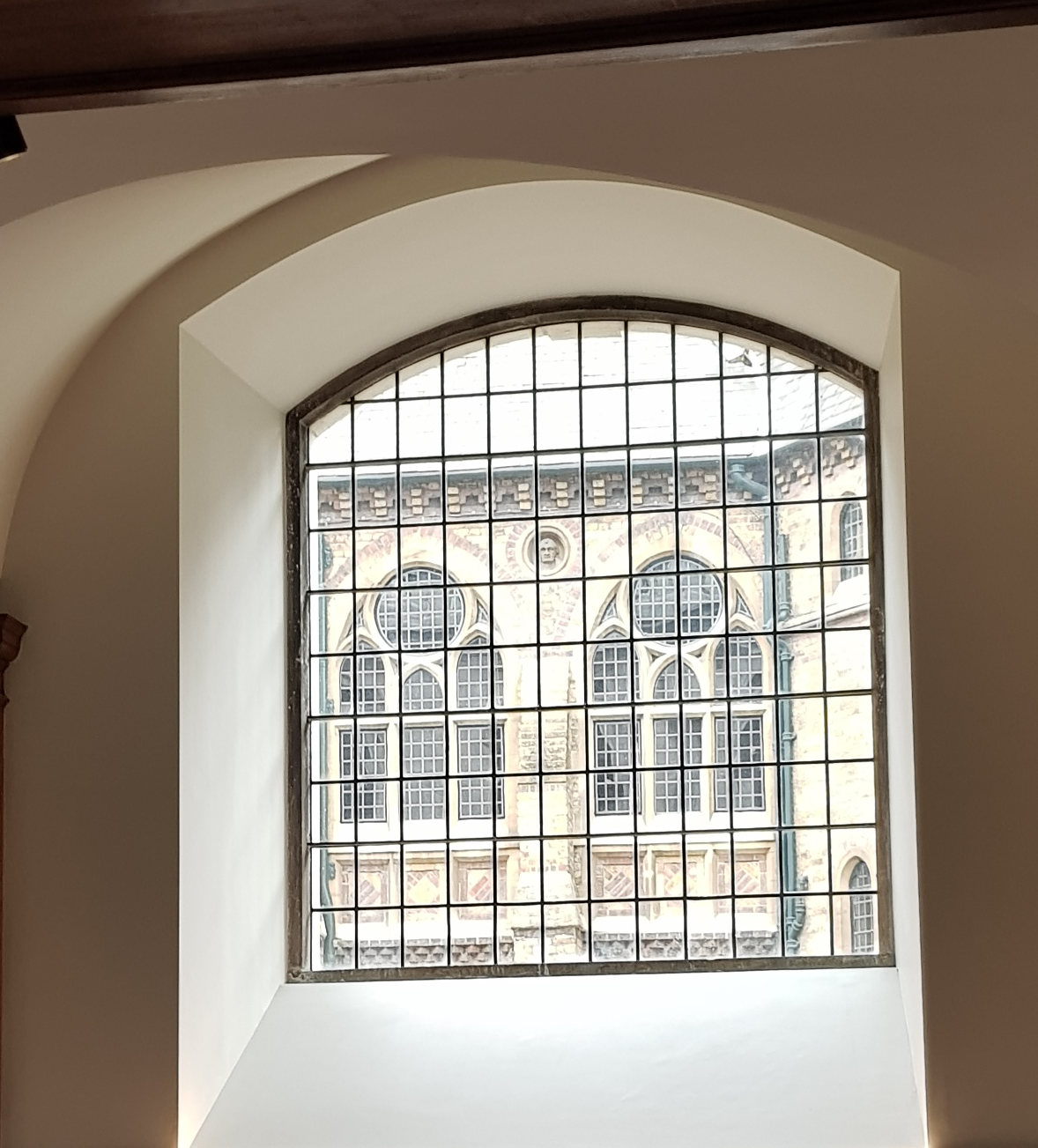
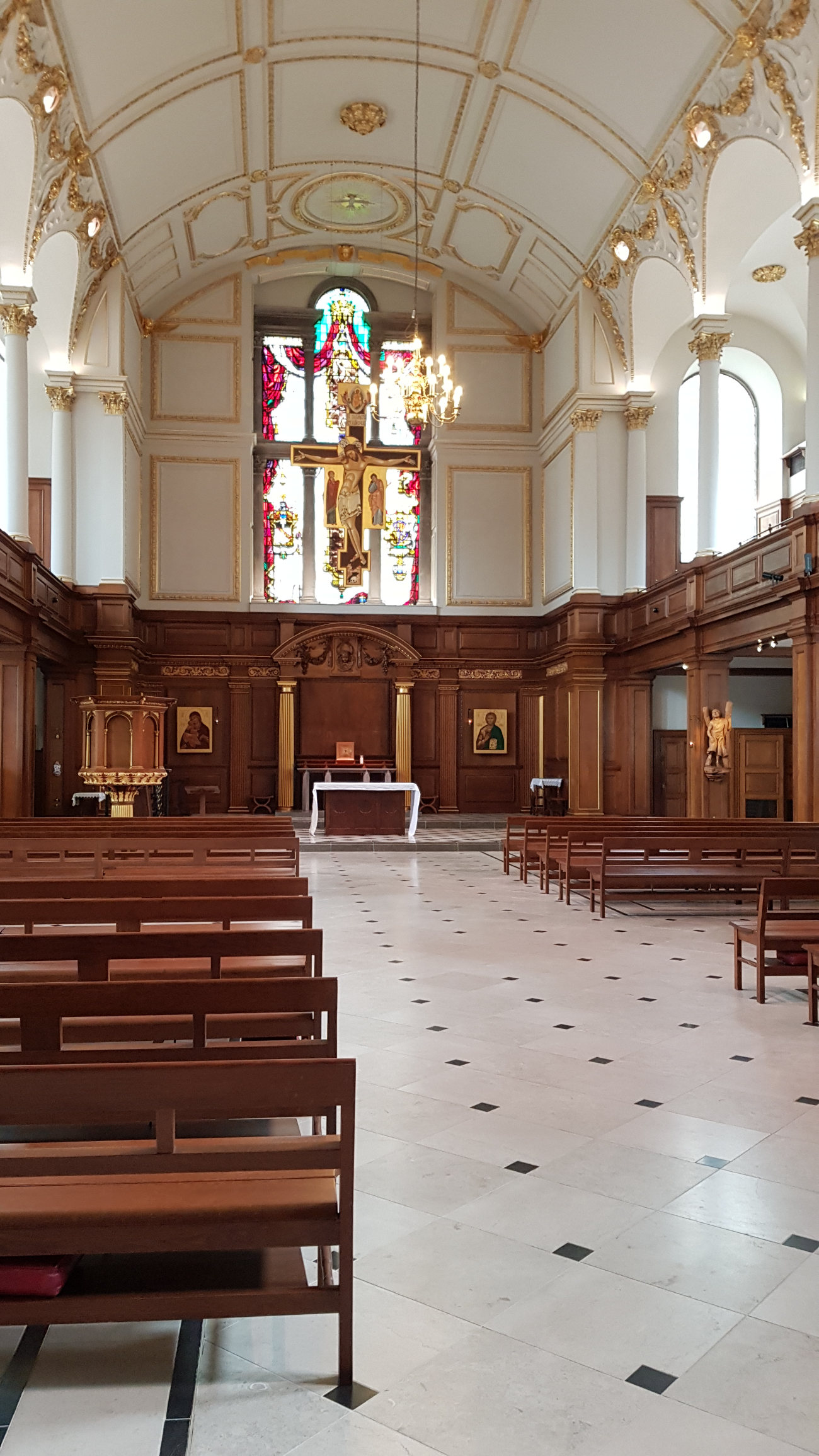
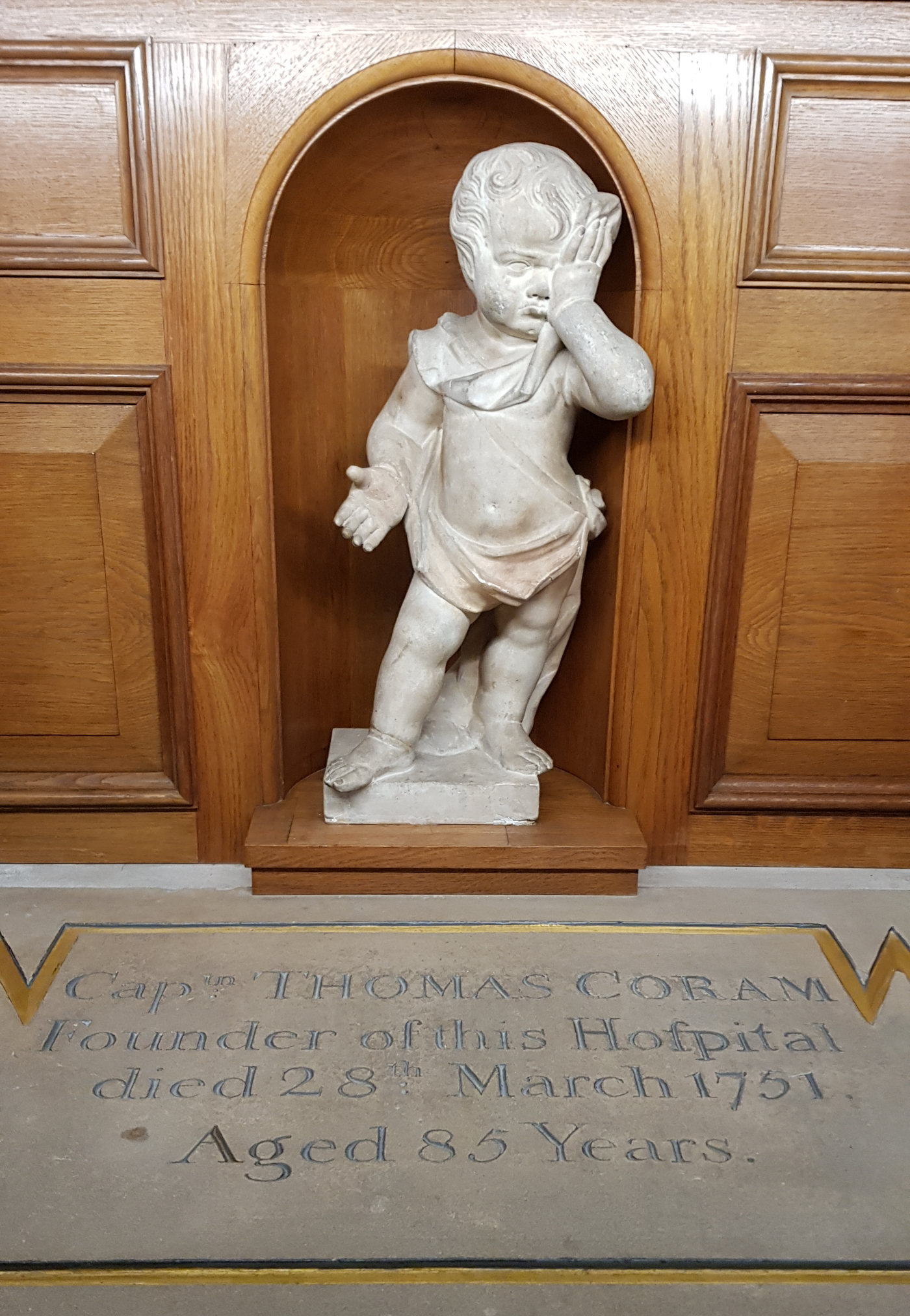
St Etheldreda’s
If you cross the road from St Andrew’s into Ely Place you come across St Etheldreda’s. Now this has an extraordinary history. It was the chapel of the Bishops of Ely, and originally stood within the extensive gardens of the Bishop’s Palace in London. Apparently it is the oldest Catholic church in England and one of only two remaining buildings in London from the reign of Edward I (king from 1272 to 1307). The entrance board tells us it was ‘restored to the old faith’ in 1874 which suggests it hasn’t been continuously Catholic.
Inside you feel like you’re in another century, although there is a fine (modern) stained glass West window, and the crypt has the feel of a conference centre.
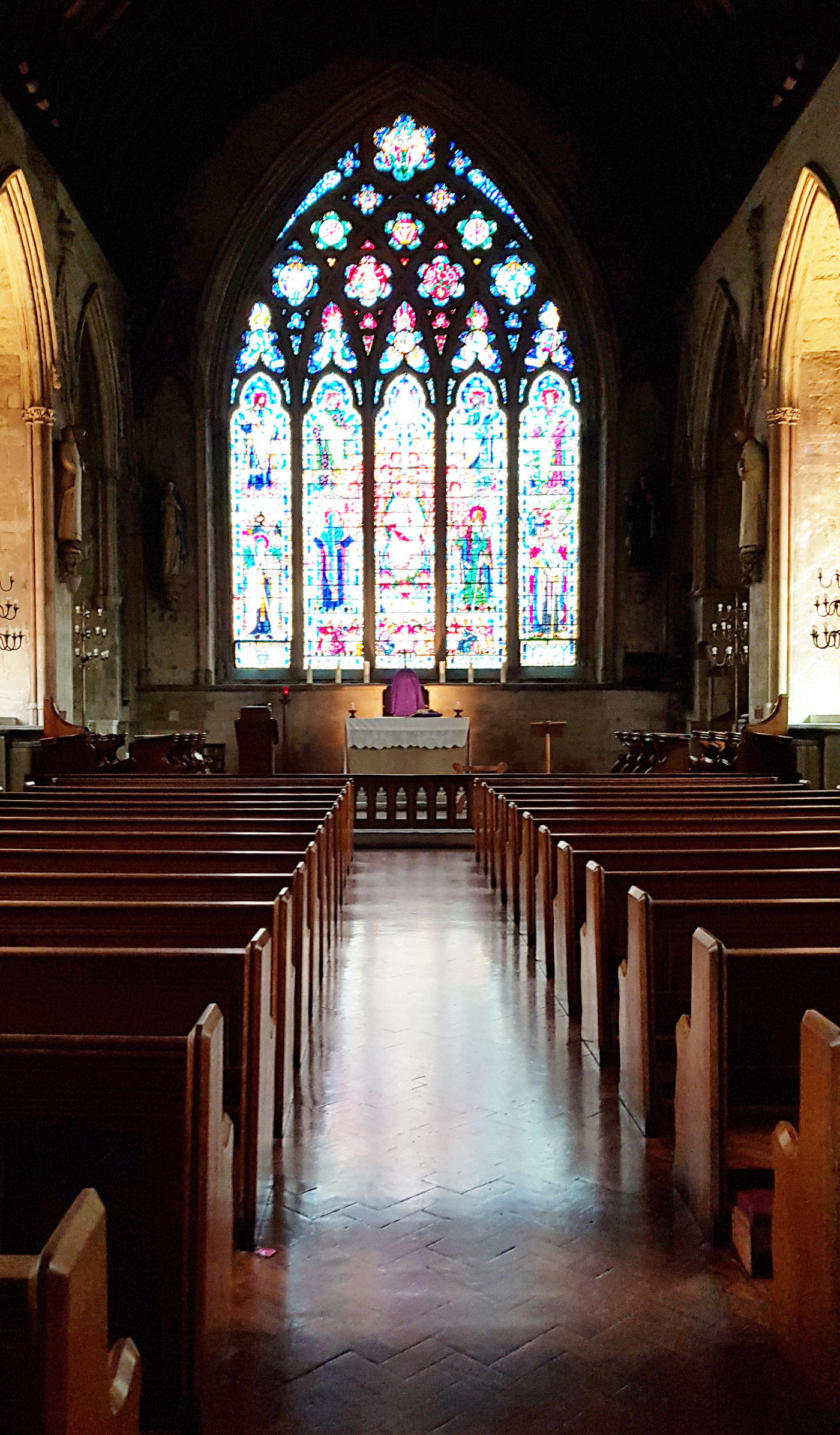
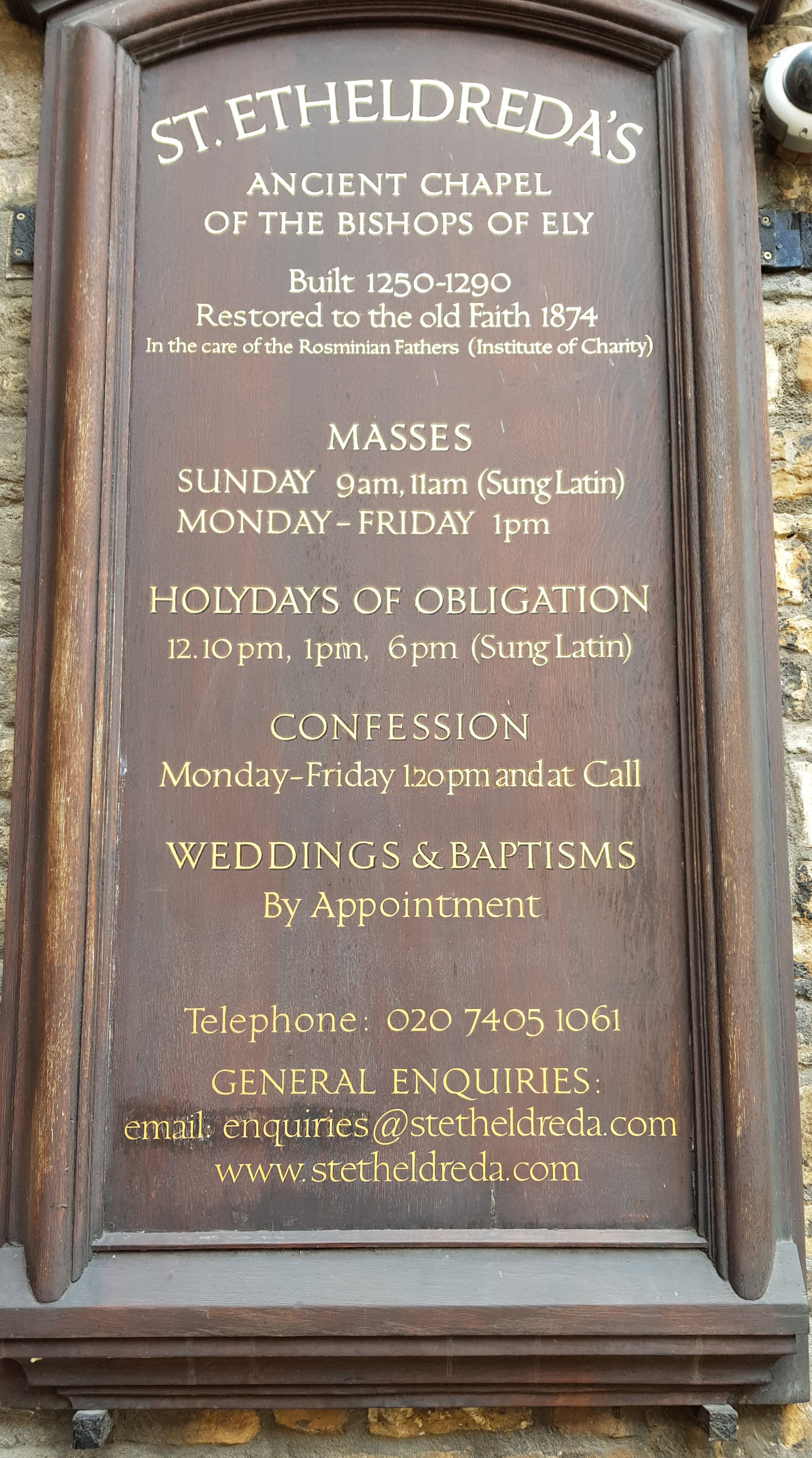
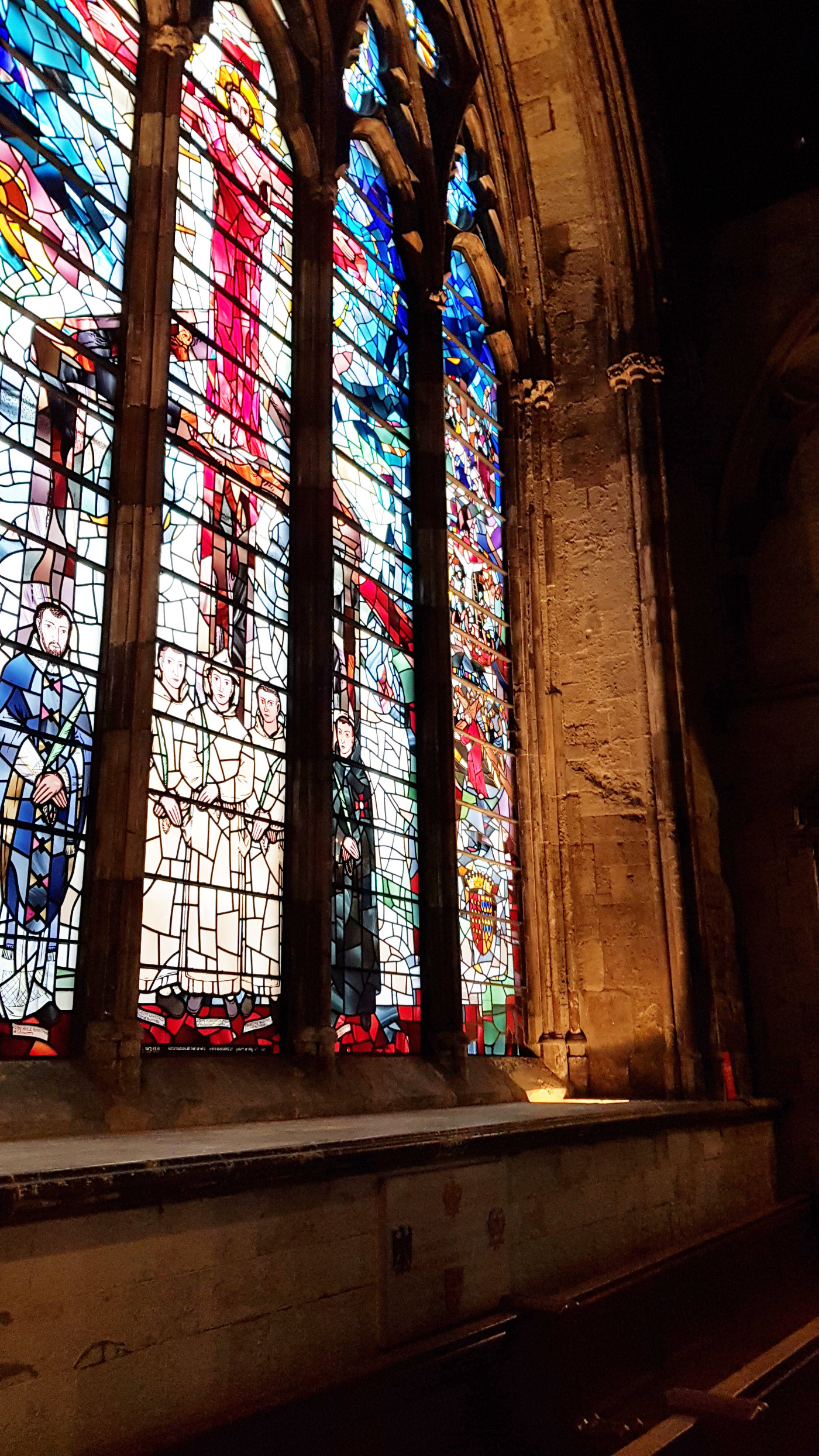
A fine organist friend of ours, Iestyn Evans, was the organist here for a while, but he’s now the Director of Music and organist at St Botolph without Bishopsgate. Which very neatly brings this blog post around full circle.
Other posts in this series:
Discover more from An Eastbourne Diary
Subscribe to get the latest posts sent to your email.
Be First to Comment